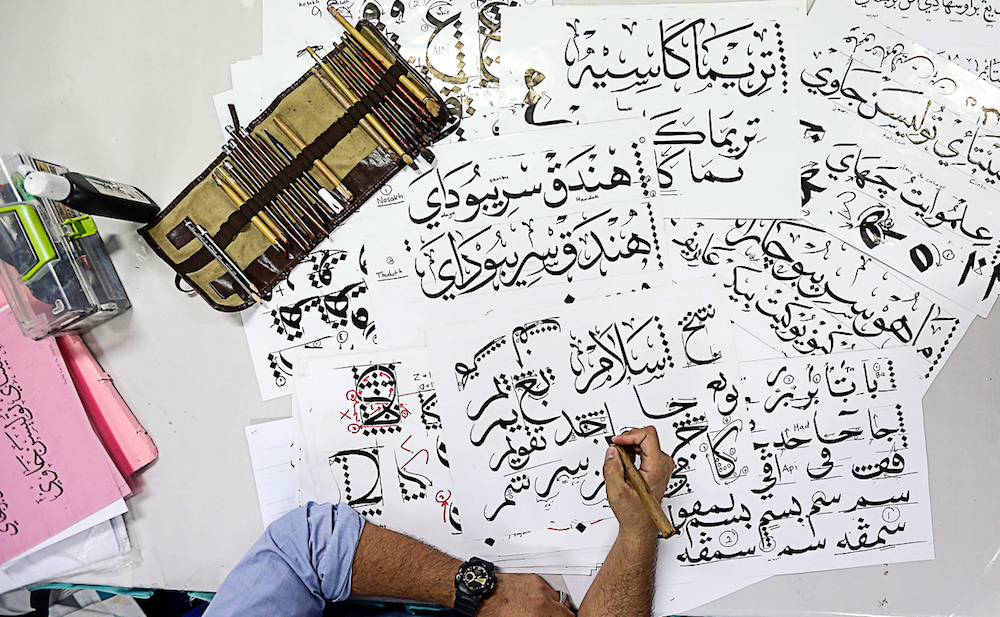KUALA LUMPUR, Aug 13 — Observers say that poor communication coupled with the previous government’s Muslims-only exclusivity for certain Arabic words contributed to the rejection of khat by vernacular education lobby groups.
Malaysian cultural heritage group Pusaka’s president Eddin Khoo, who supports the introduction of khat in the Bahasa Malaysia syllabus, said the public is confused due to semi-literate opinions about the issue going viral while Putrajaya failed to properly articulate khat’s implementation.
“There are a lot of semi-literate opinions out there, such as khat being an Islamic tradition but it is a lot more complex than that. Jawi is rooted in the Arabic alphabet and khat is a stylised form of jawi-Arabic-Persian calligraphy,” Khoo told Malay Mail.
“For me, the teaching of jawi is very important in the study of the Malay language because it reflects a very important aspect of its history.
“It is going to be taught in the Bahasa Malaysia syllabus anyway, but the policymakers have not articulated in a proper way how they are going to do it.”
The son of the late historian Tan Sri Khoo Kay Kim also observed that the teaching of languages in Malaysian schools is very under-developed as students are only taught how to read and write it.
He said this makes the study of languages very one dimensional as children are not taught the history and evolution of the language; in this case, the jawi script, its origins and how it was used throughout the history of the Malay language.
Khoo said there is a possibility khat’s introduction was meant to be the precursor to opening up the Bahasa Malaysia syllabus to include its history and evolution but due to lack of proper communication, many do not know what is really going on.
He added that there has been no real dialogue on the matter and vernacular education lobby groups are trapped by identity politics; they are battling with ghosts of the past haunting the issue.
“We have no exposure to social history. The Chinese have been writing jawi for centuries. We go to the East Coast today and people will find it very strange that we are arguing over the writing of jawi and khat,” Khoo noted.
“These are interest groups trapped by their own agenda and it’s really an issue that has gone beyond any kind of common sense. A large portion of this is the fault of the policymakers.
“I don’t know why it can’t be explained that jawi will be taught as historical experience and taught within the Bahasa Malaysia syllabus.”
Universiti Kebangsaann Malaysia (UKM) Institute of Ethnic Studies principal research fellow Datuk Denison Jayasooria agrees with Khoo’s observation that the problem behind khat lies in poor stakeholder engagement during the policymaking process.
Denison pointed out that historically, since Malaysia achieved independence, the Malay language has been taught in the Roman script.
“The script of the national language shall be the Rumi script: provided that this shall not prohibit the use of the Malay script, more commonly known as the jawi script, of the national language,” Denison said, quoting from the National Language Act.
He pointed out that this included its compulsory introduction in vernacular schools.
His colleague — UKM associate professor Kartini Aboo Talib Khalid — added that the problem behind khat’s introduction in vernacular schools does not stem from the subject itself but the man behind it.
“The problem is not the song but the singer. Education Minister Maszlee Malik has a good intention but his connection to Ikram and Abim has been misunderstood as carrying a hidden agenda for Islamisation.” she said.
Maszlee had previously explained that he did not initiate the introduction of khat in vernacular schools but was in fact continuing a policy which was first proposed in 2014 when the country was led by the Barisan Nasional administration.
At the same time, the fact that the then government’s policy that certain Arabic words be exclusively Islamic in nature has also contributed to the rejection of khat by non-Muslims and their respective representatives and NGOs.
Singapore Institute of International Affairs senior fellow Oh Ei Sun observed many non-Muslims feel that this is an introduction to Islamisation due to their unfamiliarity with the subject.
“Well, many non-Muslims perceive jawi to be mainly used for Islamic purposes, so, yes, by extension they see khat as Islamic,” said Oh.
“Some of the more ‘old-fashioned’ advertisements, trade names, etc. including some modern ones are also written in khat. But the reality is that contemporary Malay has rarely been written in khat.
“The so-called khat calligraphy is a kind of calligraphy that expresses the artistic beauty in the written scriptures of the Quran. It is also a way of displaying Muslim culture in the region.”



















